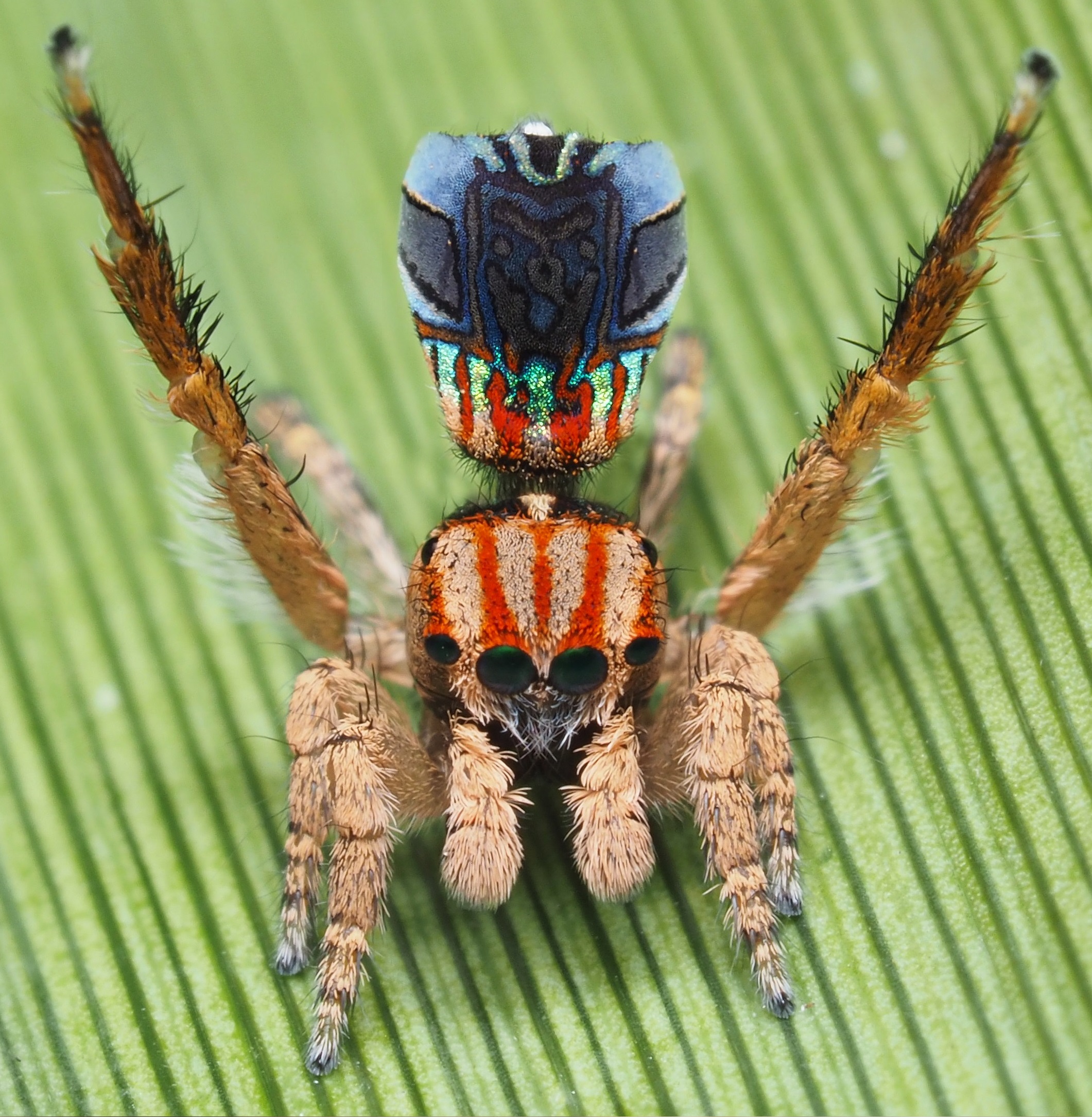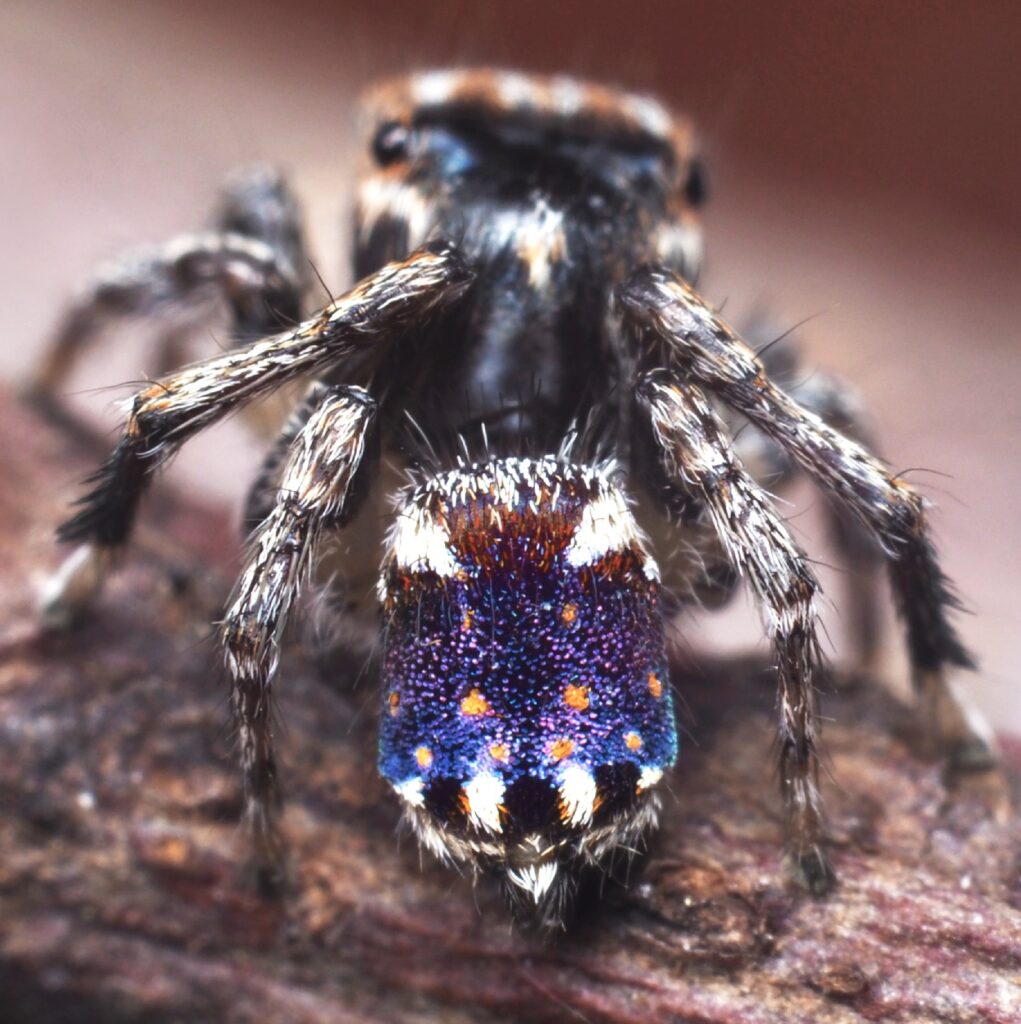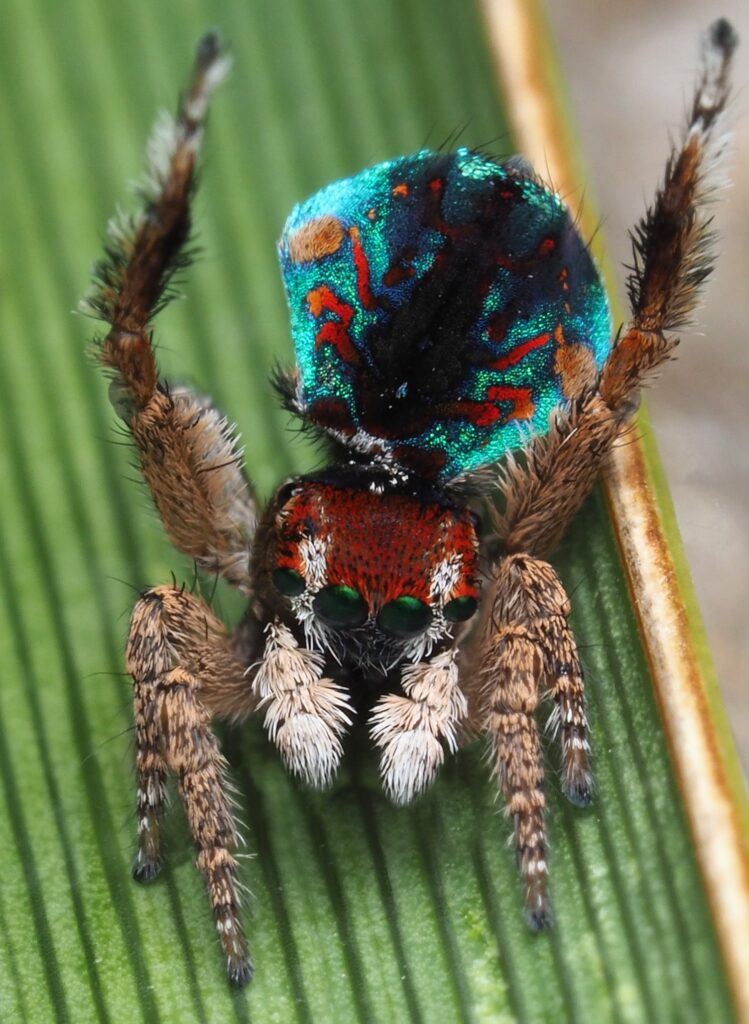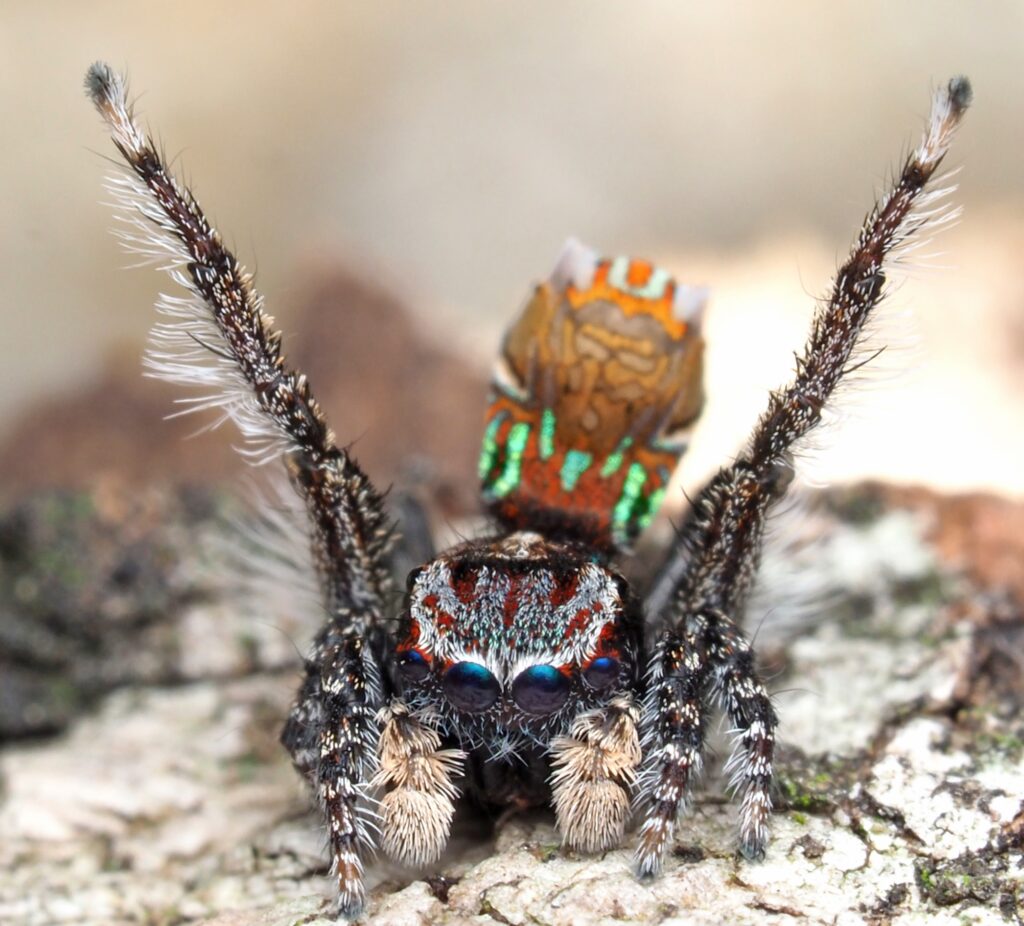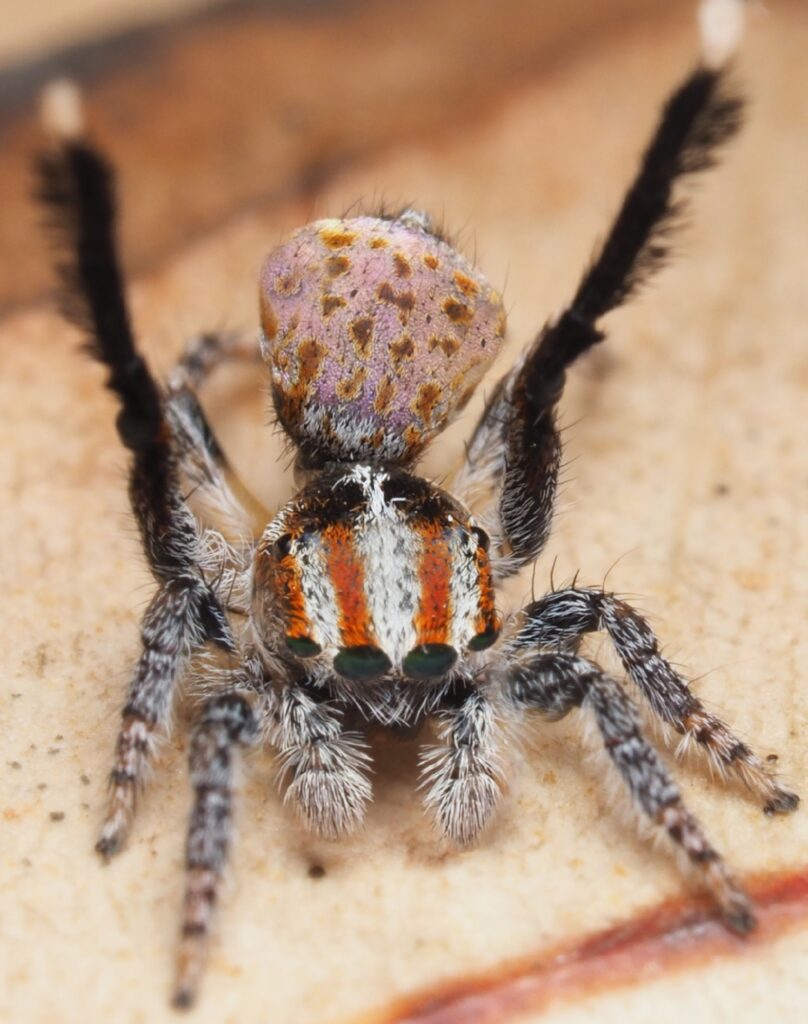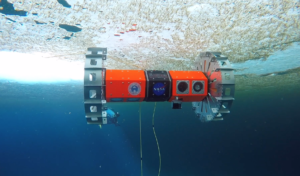They’ve been called the world’s cutest spiders—and now five new peacock spider species have joined the party in WA.
The rave-worthy arachnids feature vibrant blues, greens, oranges, yellows and reds. One species even looks like Vincent van Gogh’s Starry Night.
The new species were found all over the state, from Kalbarri to Albany.
Dazzling dance floor heroes
Peacock spiders are world famous for their dazzling colours and enthralling courtship rituals, where the males ‘dance’ for females.
“They’ll do this by lifting their third pair of legs and their abdomens,” says Museums Victoria spider researcher Joseph Schubert.
You could say peacock spiders are the social media influencers of the invertebrate world.
Joseph, who described the new WA species along with one from South Australia and one from Victoria, says the males will lock on to a female before going all out with their moves.
“If they can tell a female’s around, they’ll start waving their third legs about as if to advertise their presence,” he says.
“I’ve noticed that the males only do a fully fledged courtship display with the dance and all if a female’s actually looking at him.
“If the female reciprocates, they’ll move closer to each other and mate.”
Tiny and bright
Peacock spiders grow to about half a centimetre long—roughly the size of an eraser on the end of a pencil.
They are native to Australia, and Joseph’s research brings the number of known species to 85.
Some people claim the female peacock spider eats the male, either after mating or if she rejects him.
But Joseph believes this is probably rare.
“I’ve never actually seen it happen,” he says. “I think it’s more of an opportunistic thing.
“If a female is hungry—spiders are quite cannibalistic and she could easily make a snack out of him.
“But it’s not a ritualistic after-mating snack per se.”
First step to conservation
Joseph says his favourite part of the job is giving the spiders names that will be universally recognised by other scientists.
He takes inspiration from the spiders’ colours, where they were found and people who helped him along the way.
Joseph says giving the spiders a scientific name allows researchers to share information about them.
It’s also the first step in getting legal recognition for individual species.
“In the case that there’s any risk to their conservation status, we’re able to create legislation to protect them,” Joseph says.
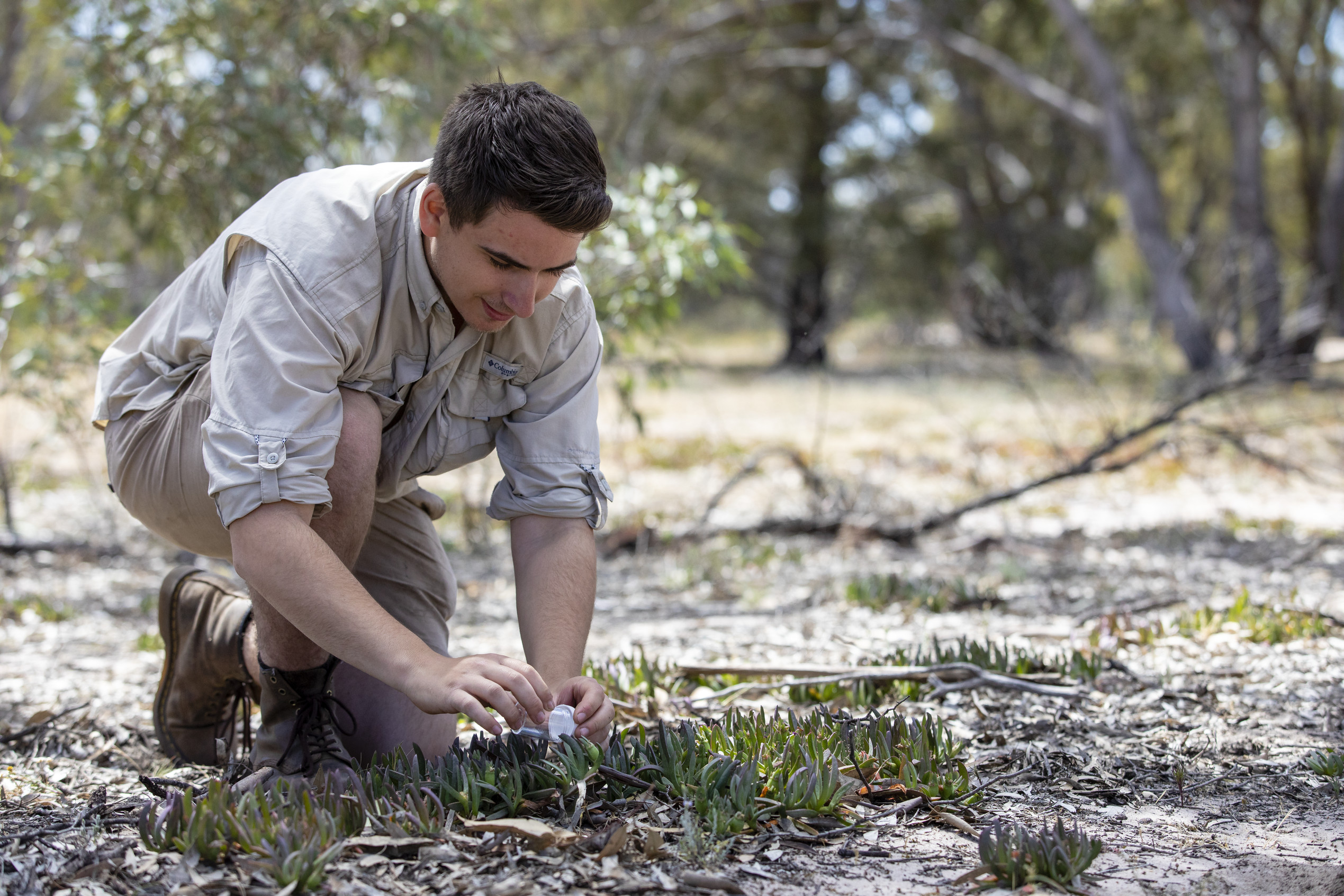
And it’s important to know that the different spiders exist at all.
“In order to know if we’re potentially losing species to extinction, we have to know that they exist in the first place,” Joseph says.
“You can’t do that unless you spend the time to give them a scientific name.
“It’s a slightly arduous process but it is worth it.”
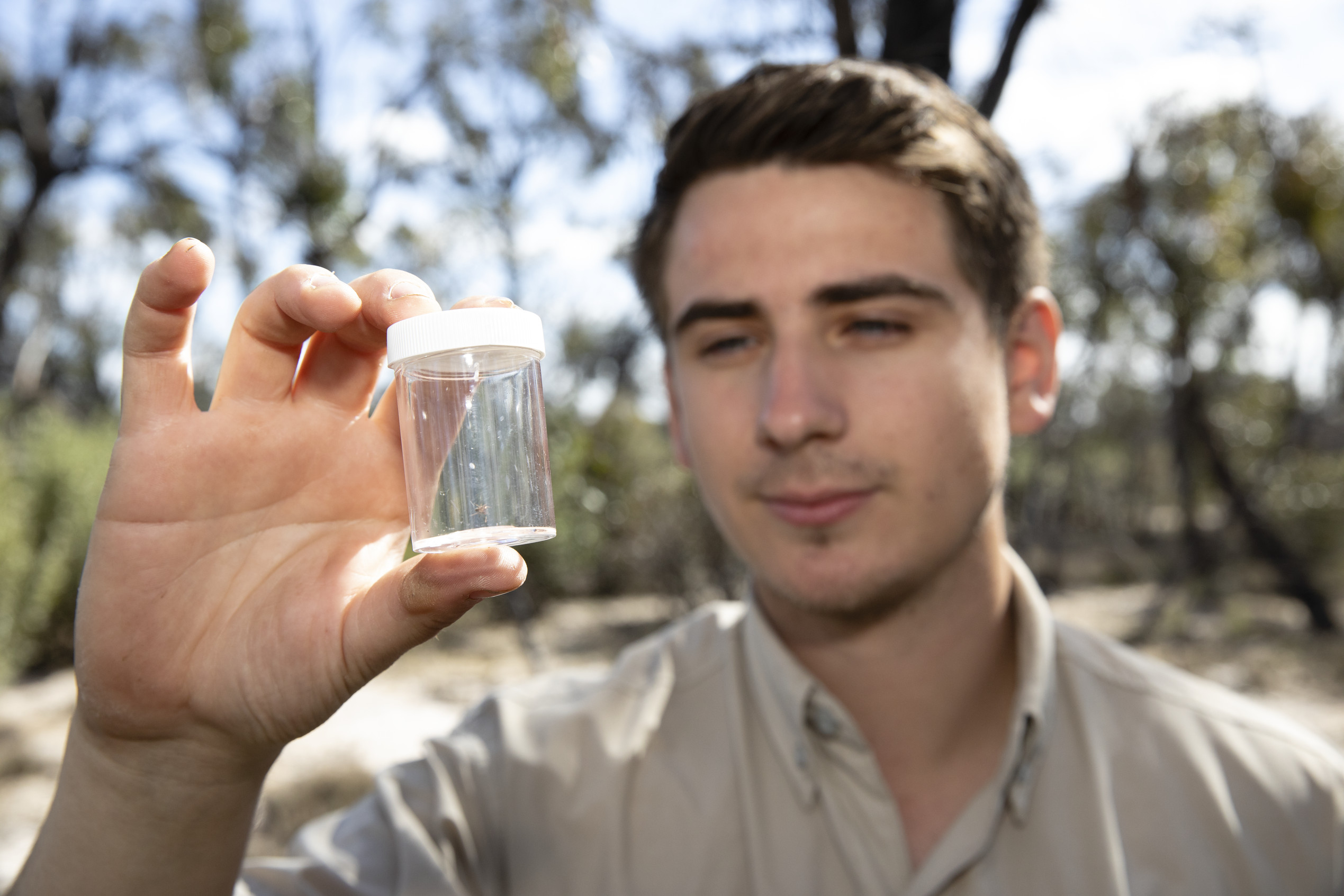
Joseph hopes to find even more peacock spiders out west.
“The southwest corner of WA seems to be a massive biodiversity hotspot for them,” he says.
“You can go just about anywhere in the bush and find them.
“If you go to locations people haven’t really looked for them before, it seems that it’s quite likely you might find a new species.”



